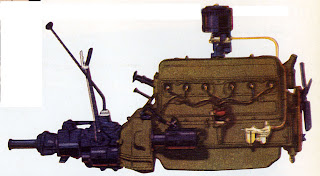Captured in chrome, the Mustang expressed the freedom owning a Ford muscle car was intended to bring.
With a new body style unveiled only two years ago, there was little to do but sell these hot babies and reap the rewards. Models stood pat for 1973. Just like last year, the consumer could chose among five sweet ‘Stangs. The Hardtop, SportsRoof, Convertible, Grande and the Mach 1 were each individual Mustangs in their own right. No two were meant to be alike. “You’ll see how easy it is to design more luxury, convenience, performance and styling into your Mustang to make it an even greater driving experience. Mustang 1973: still designed to be designed by you.” This season the sales slogan billed Mustang as “The Beautiful Experience." Advertising waxed eloquent for the quintet of Mustangs.
The ragtop promised “road romance” and bragged that it was the only convertible produced by the Ford Division. This Mustang came with a unique interior that boasted its own deluxe knitted vinyl upholstery, moulded door panels and wood-like inserts splashed throughout the cabin—all designed for “class and flash.”
The 1973 Ford Mustang convertible weighed in at 3,202 pounds and listed for $3,686 f.o.b. Oakville.
The Mustang Sportsroof boasted a “whistling crisp profile.” The fastback, with its vast expanse of rear glass, resembled its kin with a honeycomb grille and those nifty colour-keyed bumpers made of urethane. All of this sleekness was folded into a package that promised to deliver “control, balance and style.”
 The Mustang hardtop was “popular, practical, roomy and rugged with sport action to spare.” Here was the Mustang for the purist; the Mustang that offered “the original beautiful driving experience.” The hardtop promised it had captured the classic styling touches and classic Mustang features “all over again.”
The Mustang hardtop was “popular, practical, roomy and rugged with sport action to spare.” Here was the Mustang for the purist; the Mustang that offered “the original beautiful driving experience.” The hardtop promised it had captured the classic styling touches and classic Mustang features “all over again.” One could get behind the wheel of a 1973 Ford Mustang for as little as $3,135.
 The Mach 1 was “smoothly rambunctious with marvelous road and ride manners.” The fast Ford boasted special black tape and paint treatment. “The standard NASA-styled hood scoops and colour-keyed dual racing mirrors add sports car flavour for people who love sporty cars.” It came with a Sports Interior option that included a woodtone centre Instrumentation Group made up of a tachometer, a trip odometer, oil pressure, water temperature and an ammeter housed in a special triple pod.
The Mach 1 was “smoothly rambunctious with marvelous road and ride manners.” The fast Ford boasted special black tape and paint treatment. “The standard NASA-styled hood scoops and colour-keyed dual racing mirrors add sports car flavour for people who love sporty cars.” It came with a Sports Interior option that included a woodtone centre Instrumentation Group made up of a tachometer, a trip odometer, oil pressure, water temperature and an ammeter housed in a special triple pod.The 1973 Ford Mustang Mach 1 came with the 302 V-8 as standard equipment. It cost $3,250, making it the most expensive Mustang in Ford’s stable.
Finally, there was the elegant Grande. This refined offering was “a matter of grace, touch and taste.” It promised to be “an exceptional escape from the ordinary: by combining “quiet luxury with a beautiful driving experience.” The upscale Lambeth cloth upholstery made the Grande “a carefully dressed sophisticate.”
Visit my old car website at http://www.theoilspoteh.ca
Standard power under the hood was the same as last year. The modest 250-cubic inch, 1-barrel carb mill moved the Mustang. Once again, the Mach 1 was the lone exception to that rule; the Mighty Mach I started life with the 302 V-8 at no extra cost. The 302 was optional in lesser ‘Stangs and there was a 351 option with 2- or 4-barrel carb setup were also available. In accordance with Ministry of Transport rules, all engines now operated on regular octane gasoline.
The horse could be dressed in any of 26 colours this year. For an even brighter sheen and more glamour than Pamela anderson, Ivy Glow Metallic, Metallic Blue Glow and Metallic Gold Glow were the hottest of colours, all three were available at extra cost and emphasized by sales personnel as being the way to go.
Racy and sleek, the instrument panel of the 1973 Ford Mustang was an empowering experience for the driver.
There were nearly as many optional accessories for Mustang as there are potholes on the Number One Highway in March. For extra money one could have a centre console, SelectShift Cruise-O-Matic Transmission or a four-speed manual transmission with a Hurst Shifter. The centre console contained an integral electric clock. There was a Convenience Group that included a headlamp reminder buzzer, glove box lock, an automatic seat back release, courtesy lights and a parking brake reminder light. There were lights for the trunk, glove box and under the hood as well as a map light. One could order the SelectAire Conditioner, power steering and the five-way adjustable Tilt Steering Wheel. AM Radio, AM/FM Stereo with or without the StereoSonic Tape System. power front disc brakes, power windows, vinyl tops, rear window defroster, body striping, several décor groups, numerous tire and wheel cover options including Magnum 500 chrome wheels.
Oakville’s muscle car was alive and well. When the figures were tallied up at year’s end, the Mustang broke records as it racked up 11,175 sales across the country. If the boys in marketing had contacted a psychic they would have been ecstatic to know that sales for Mustang would increase by nearly a third in 1974 but that is a story for another day.
Copyright James C. Mays 2007. All right reserved.




























